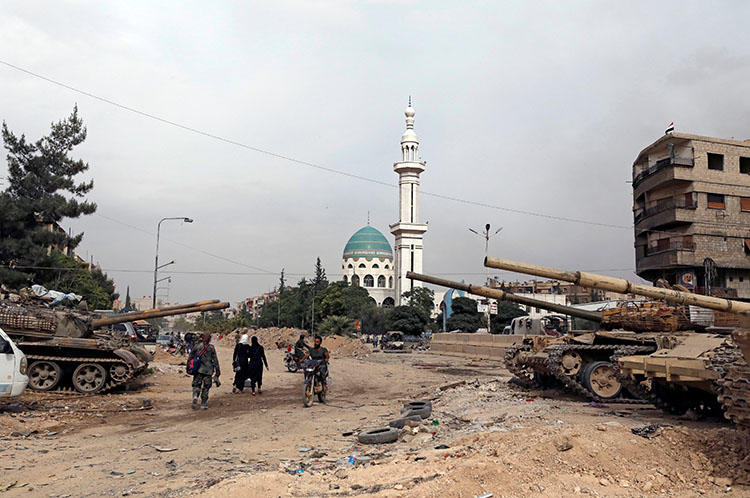Beirut, July 16, 2018–The Committee to Protect Journalists today called on Syrian authorities to conduct an immediate and transparent investigation into the death of Niraz Saeed, a Palestinian-Syrian photojournalist who died in state custody. The news of his death comes as dozens of journalists trapped in southwest Syria have appealed for help to escape the advancing forces aligned with President Bashar al-Assad.
In a Facebook post today, Lamis al-Khateeb, Saeed’s partner, wrote that Saeed died while in the custody of the Syrian security forces after nearly three years in detention. Al-Khateeb did not specify the exact date of Saeed’s death. She didn’t immediately reply to CPJ’s request for comment via Facebook.
Nidal Bitari, the managing director of the Washington D.C.-based non-governmental organization People Demand Change, and a friend of Saeed, told CPJ that the journalist’s mother contacted a senior government official on July 13, who told her that Saeed had been executed in September 2016. Bitari said that another member of Assad’s government called the mother today to confirm that her son is dead.
At least two news reports cited an unnamed source as saying Saeed died after being tortured in custody.
“Niraz Saeed’s story is a tragedy for his family, friends, and colleagues–as well as a living nightmare for dozens of journalists in Syria today,” CPJ’s Middle East and North Africa program coordinator, Sherif Mansour, said from Washington, D. C.
Assad’s security forces arrested Saeed in October 2015, and held him on anti-state charges, Bitari said. He added that the arrest was likely connected to Saeed’s work covering the humanitarian effects of the Syrian government’s siege of his home district of Yarmouk, a Damascus district inhabited by Palestinians.
After Saeed’s arrest at his home in Damascus in 2015, security officers took him to an unknown destination, according to recent news reports. After several months, Saeed’s family found out that he was being held at Damascus’ Palestine Branch military intelligence prison, Bitari told CPJ.
Bitari told CPJ in August 2016 that Saeed was moved to Sednaya prison in Damascus, which is operated by the military police. Bitari told CPJ that Saeed was charged with taking money from foreign governments as part of a terror plot.
Syria is one of the most dangerous places in the world for journalists. At the time of CPJ’s most recent prison census, at least seven journalists were in Syrian state prisons. Many others are missing. At least 120 journalists have been killed covering the Syrian conflict, and government or military officials are suspected in more than half of those deaths.
Currently, at least 70 journalists and media workers are caught in Quneitra, between advancing forces aligned with Assad and the closed borders of Israel and Jordan.
“If left to Syrian and Russian forces, the journalists stuck in Quneitra and Daraa could be arrested, or killed, or both,” CPJ’s Mansour said.
Saeed did not appear in CPJ’s annual census of journalists jailed for their work because his family requested that his case not be publicized.
Saeed was previously threatened for his work documenting life in the Yarmouk camp where he lived, according to reports. His photographs were widely published, including on the London-based websites of Al-Araby al-Jadeed and Al-Arab online. Saeed’s photo essay “The Dream Continues,” on the lives of Yarmouk residents, appeared in the Lebanese newspaper Al-Safir, and the Palestinian Al-Watan Voice and Al-Wattan. In 2014, he won UNRWA‘s (United Nations Relief and Works Agency for Palestine) photo competition with a picture of three young brothers awaiting evacuation from the camp.
